Related Content
Content
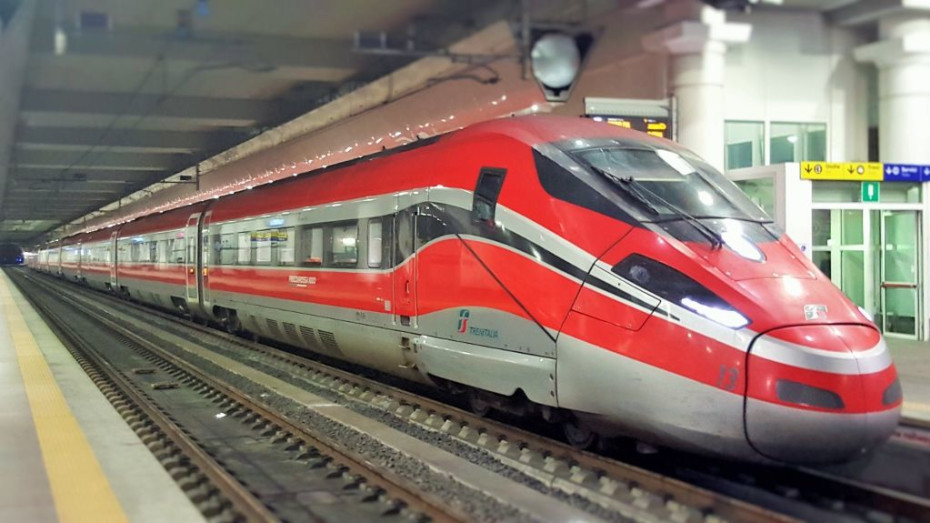
Episode 23: Whizzing from Bologna to Sorrento and back again
Travelling more than 1200 kilometers in under 10 hours, on a combination of some of Europe's most fabulous and most bizarre trains.
Share
As mentioned elsewhere on these episodes from my travel diary, travelling by high speed trains can be an anti-climax
That's largely due to interesting scenery and high speed railways being typically incompatible, because the slightest roll in a landscape can’t be allowed to cause a bend in the railway track, so in hilly areas high-speed trains tend to race between tunnels.
But the high speed route between Florence and Rome is an exception and that is probably due to its pioneering engineering.
Much of it began to be used back in 1977, when the only other high speed railway lines in the world were those used by the Shinkansen ‘bullet trains’ in Japan.
Away from the mountain ranges of central Japan, the bullet trains tend to race along viaducts, so that they don’t block roads or other railway lines and this solution was evidently adopted for this Florence to Rome ‘direttissima’.
As a consequence it’s possible to appreciate the landscape from the trains on this line and the ever changing views makes the speed of the train seem exceptionally quick, despite the newer high speed lines in Italy having a maximum speed that’s 50 km/h faster.
One of those lines which has the even higher speed, on which trains come close to travelling at 300 km/h is the route between Roma and Napoli and it’s the sense of rushing through the landscape that gives this part of the journey its wow factor.
Towards journey’s end, if you look left, you can’t miss Vesuvius.On to Sorrento
This was a first encounter with Napoli Centrale station, but I suspect it’s a textbook example of how investment in public transport can have a transformative effect on a location.
What had been a somewhat dilapidated station in a run-down corner of the city, a combination that typically acts like a magnet to those who can deter travel, has been transformed into a welcoming environment in which to connect to the city’s newly opened metro or to take a taxi from.
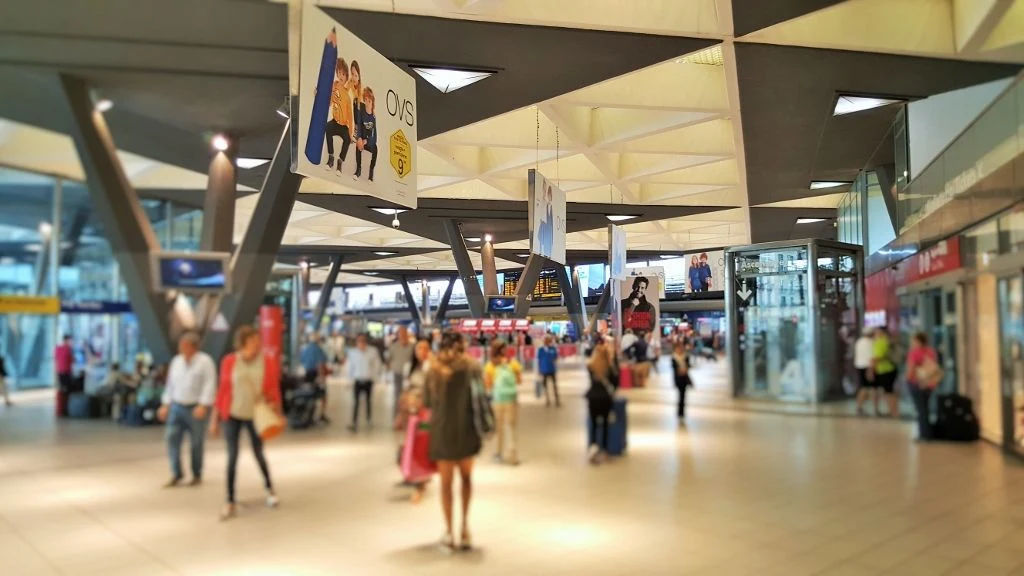
But the money well evidently ran dry before the station used by the local Circumvesuviana trains to Pompeii and Sorrento could be made over.
If you won’t need to use an elevator to access a train in a multi-level station, then a polite word for this station named ‘Garibaldi’ is functional, but if you would need to use an elevator you won’t be able to take a train from here, because there aren’t any.
But a smart passage way, where the best food and drink outlets at Napoli Centrale can be found, links the main station to the Circumvesuviana station and the signage is comparatively easy to follow.
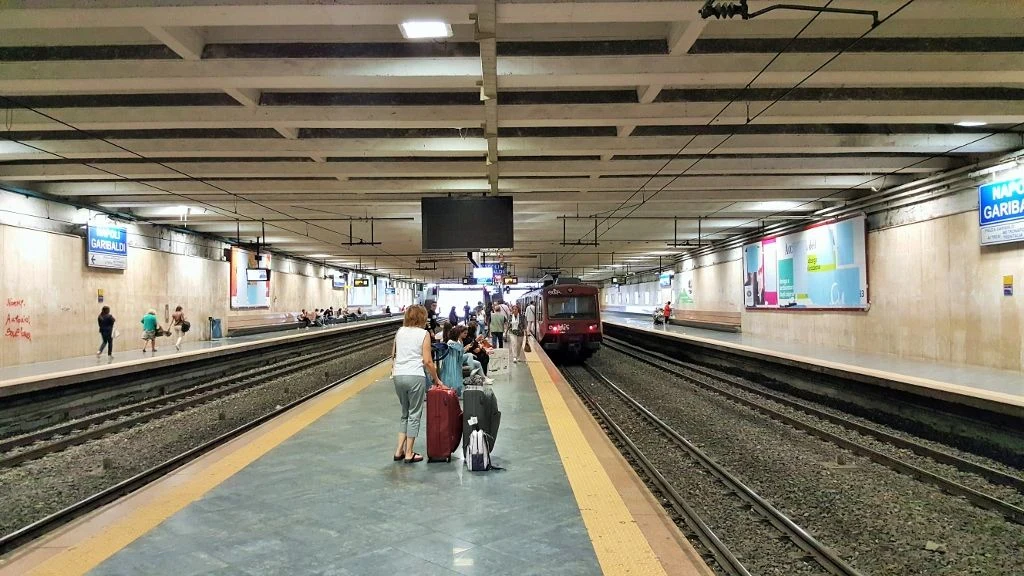
In contrast to the stations, the Circumvesuviana trains which link Napoli to Pompeii and Sorrento, have evidently benefitted from investment, the graffiti clad metal buses on rails are being replaced by modern air-conditioned trains, though they have a lot fewer seats on what can be busy services.
In the summer you’ll be very fortunate to find seats available when boarding in Pompeii for the ride back to Napoli.
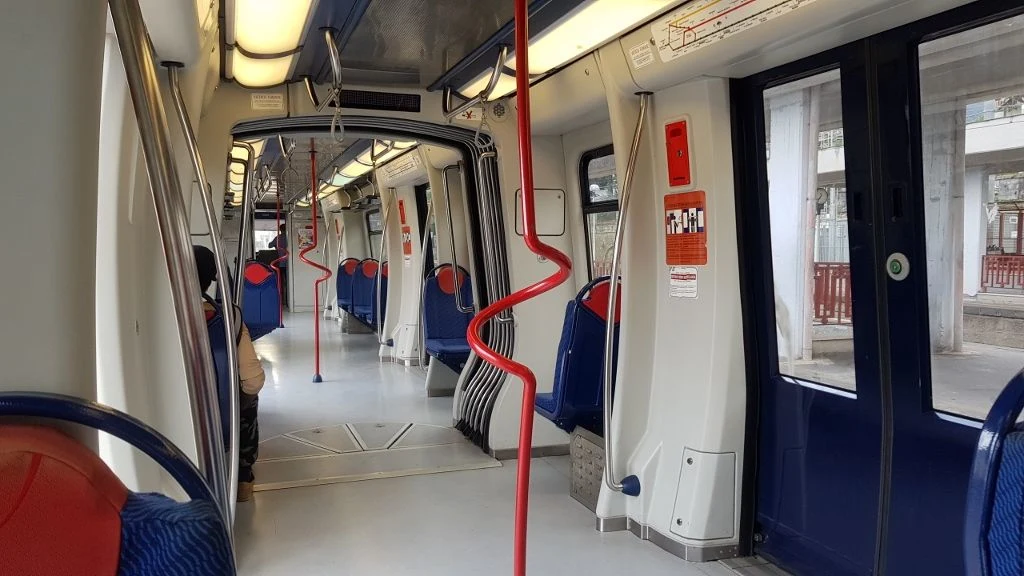
A return journey with a diversion to Roma
Heading back to Roma, the Frecce train from Napoli slammed on its brakes, waited a while before resuming its journey and then promptly ground to a halt again.
The conductor passed through the coach and said that they were trespassers on the line, an unhappy situation which quickly showcased the chief negative of high speed train travel.
When a train is supposed to be travelling a distance of a kilometre in around 15 seconds, the consequences for time keeping can be problematic when it unexpectedly doesn’t move for 25 minutes.
So by the time I arrived at Roma Termini I only had 40 minutes to spare before a train I was booked on to would be departing from Rome’s alternative high speed station, Roma Tiburtina.
This wouldn’t have been an issue if I’d been travelling back to Bologna on a Trenitalia train, I’d have simply booked a last minute rail pass reservation for a later train,
However, I wanted to experience a journey on a train operated by Italo, and because rail passes aren’t valid on Italo trains, I had a pre-booked ticket on a specific departure from Roma Tiburtina; I had deliberately opted to take a train from the Italian capital's secondary station so that I'd have an excuse to pay it a visit.
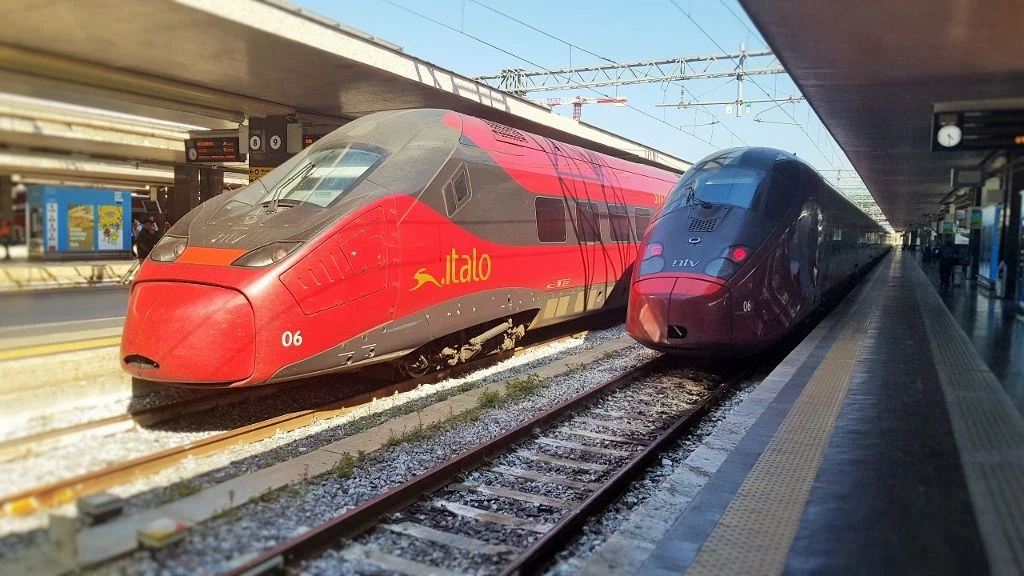
So the plan to take my time with capturing some lovely photos of Roma Termini and to then take a Regionale train over to Tiburtina had to be jettisoned, because I rushed to take the Metro.
Boarding a train at Roma Tiburtina station
One of the upsides of this experience was the discovery of a useful nugget of info, namely when taking the Metro to Roma Tiburtina, the transfer to the mainline trains is less than ideal.
Hundreds of millions of euros have been spent on rebuilding a station in a non-descript suburb of Roma in order to offer travellers an alternative to using Roma Termini.
I’d have used some of that money to construct some elevators between the platform level in the Metro station and my shiny new concourse in the mainline station, or at least come up with any alternative to travellers having to heave luggage etc up and down three flights of stairs within the Metro station, when heading to Tiburtina!
Though what calmed my mood was the glorious sight which greeted me when I finally ascended up on to the enormous bridge which spans the mainline railway tracks at Roma Tiburtina.
It is in my humble opinion the most beautiful 21st century addition to Europe’s railway landscape I have ever seen; even more awe-inspiring than the likes of Arnhem Central, London Bridge or Torino Porta Susa; though I suspect Tiburtina has now been eclipsed by the gorgeous Napoli Afragola.
But you’ll have to take my word for it.
The camera on my phone was struggling to focus on the glorious curved shapes on the station roof, so I was rooted to the spot making a series of failed attempts at taking images, and therefore an easy target for the intervention of a security guard who then asked me to hand him my phone.
A frankly panic-inducing conversation then occurred in which I had to delete all my failed images of Tiburtina station before I was waved on my way.
Leaving me to ponder what secrets Tiburtina possesses which required this intervention, my escape had been aided by the security guard’s anxiety to move on and stop some other nearby travellers from also capturing images, because the architecture is an Instagram dream.
I thankfully wasn’t asked to delete any other images, he seemed to be admiring the pictures I’d taken of the Frecce trains, so what is so special about the interior of Roma Tiburtina?
If I’d made that sort of investment to create something so pleasing to the eye, I’d want to show it off.
Presumably the station’s internal appearance is at the opposite end of the spectrum to dull, because its evident creativity was intended as a lure to entice people away from Termini, so why hide it?
Though one day I’ll return to Tiburtina, not to risk another attempt at capturing images of its design, but because in the five minutes I then had to wait for the train back to Bologna, I realised that it’s an ideal location for capturing more pictures of Italian trains, because Tiburtina is also a dream destination for train-spotting!

Simon Harper
I wanted to share my passion for train travel and explain how anyone can take the fantastic journeys I have taken.

This is one of more than 100 train travel guides available on ShowMeTheJourney, which will make it easier to take the train journeys you want or need to make. As always, all images were captured on trips taken by ShowMeTheJourney.
This second version of ShowMeTheJourney is exciting and new, so we are genuinely thrilled that you are here and reading this, but we also need your help.
We’re striving not to let anything get in the way of providing the most useful service possible, hence a facility has been set up with DonorBox which can be used to support the running costs and make improvements.
Instead of advertising or paywalls, your financial support will make a positive difference to delivering an enhanced service, as there’s a lot of ideas which we want to make happen.
So if you have found the info provided here to be useful, please consider saying thank you.



